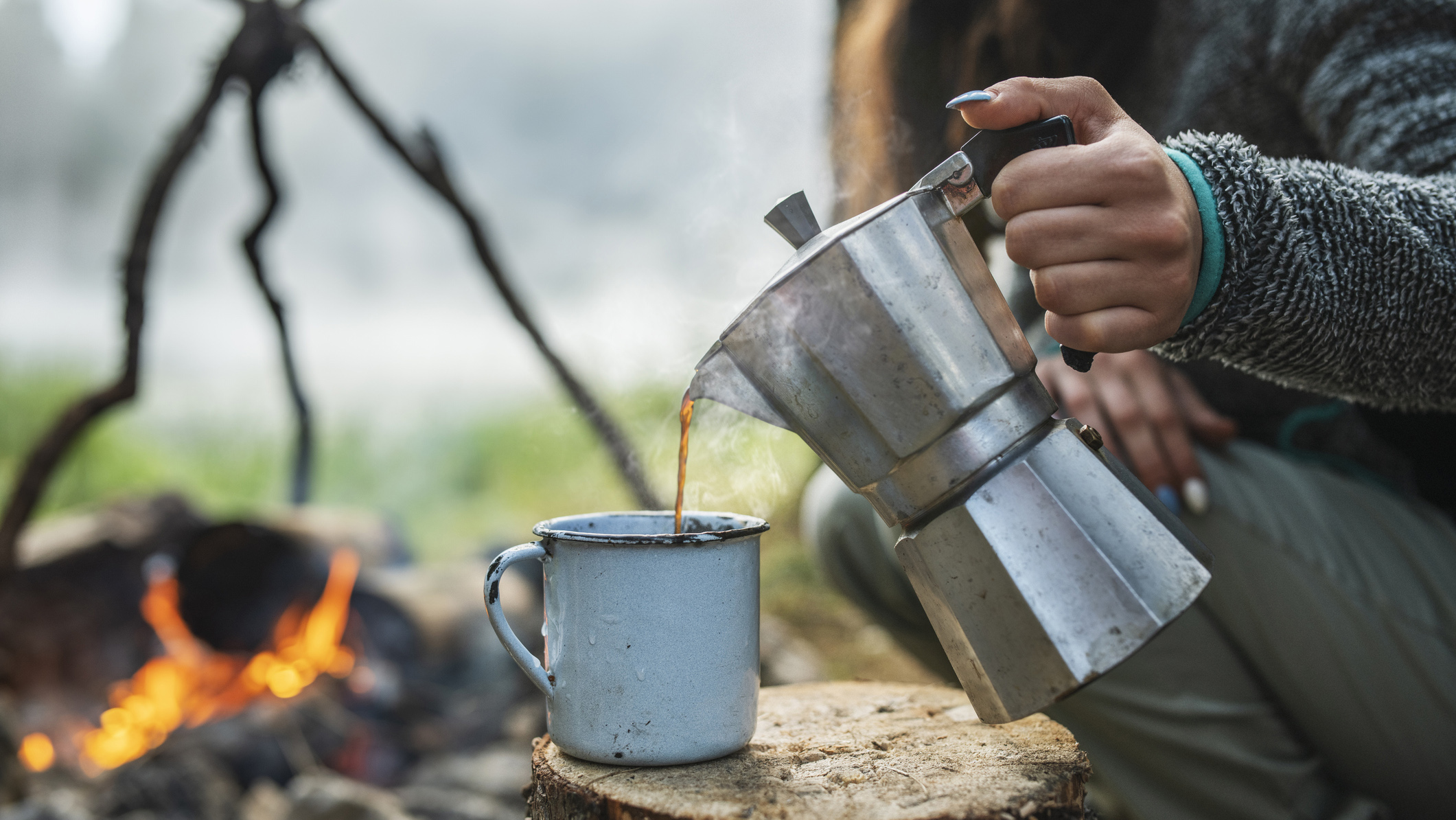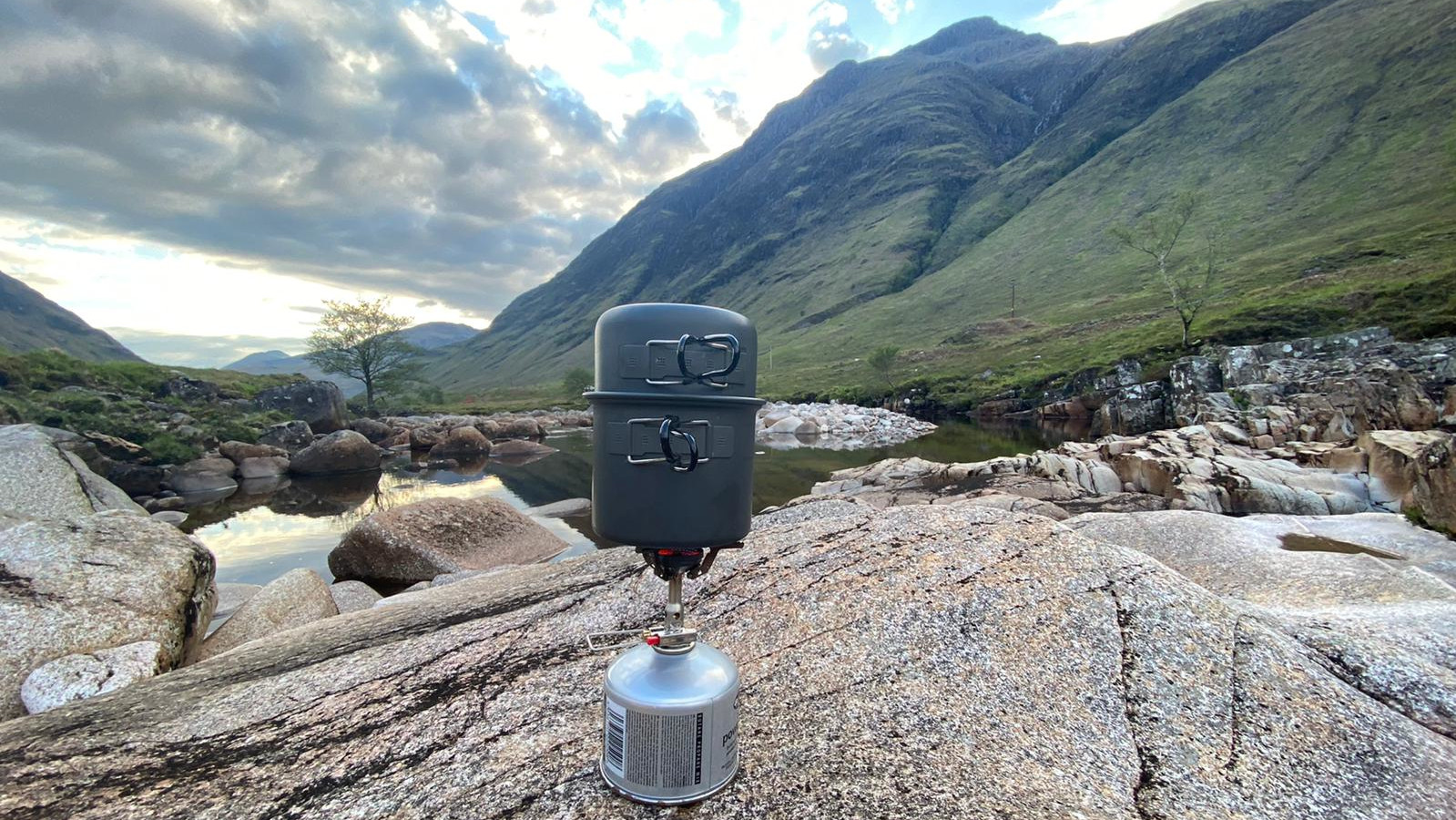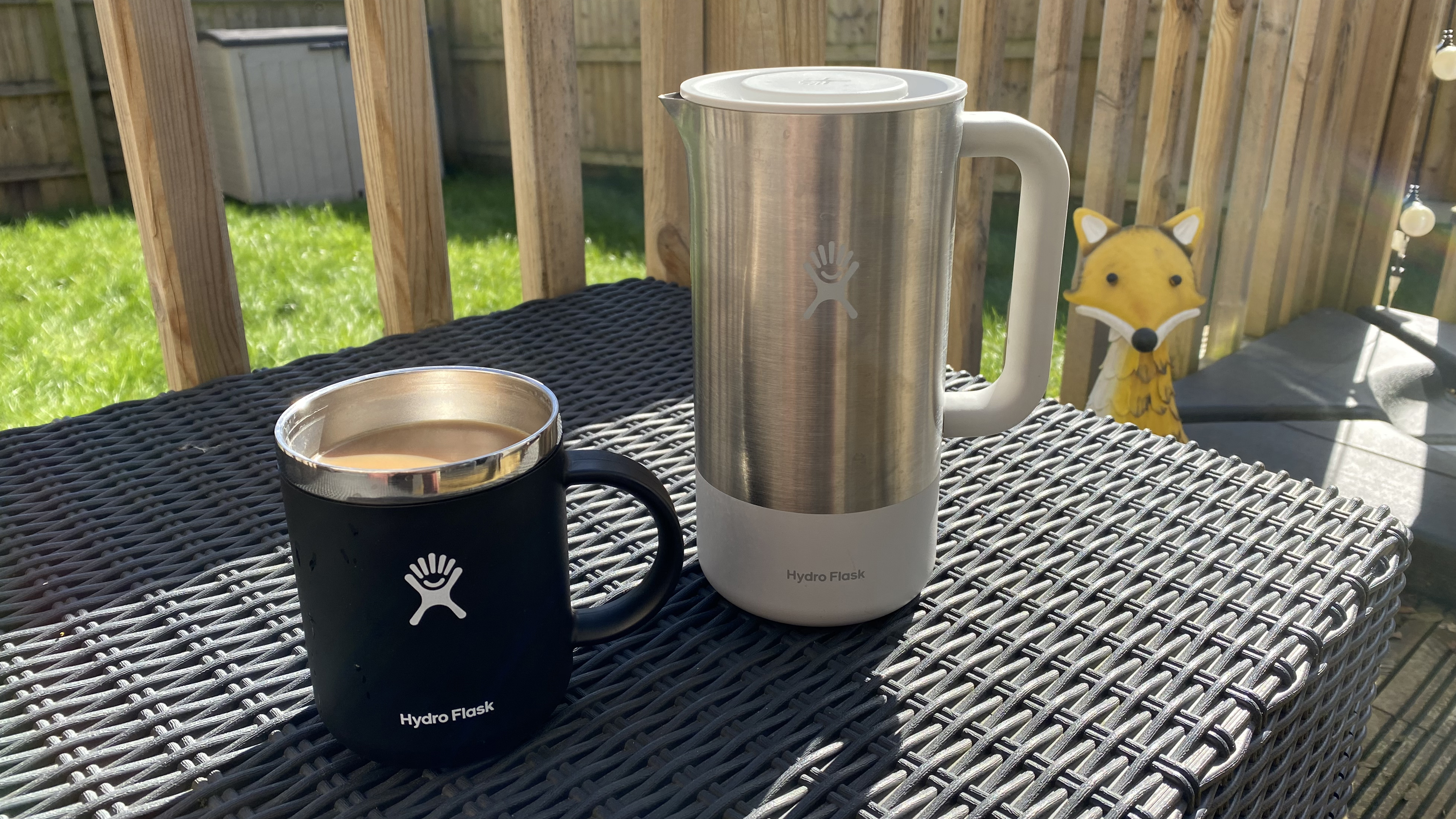
As the world's most widely consumed psychoactive drug, caffeine's popularity isn't going anywhere. Its stimulating effect makes it a particularly invigorating choice during a camping trip, where tea and coffee are ideal as warming pick-me-ups. This is one of the reasons why coffee is the beverage of choice for so many campers. That, and the fact it's absolutely delicious.
If you’re the type of human for whom coffee is second only to oxygen in terms of necessity, you'll need that mug of hot joe to get yourself going. Getting your caffeine fix when far from home or a reputable purveyor of the blessed brew can be tricky, but our guide on how to make coffee when camping – maybe taking advantage of one of the best camping coffee makers – contains a total of 10 ways in which it can be done - in ascending order by degree of drinkability and convenience for camping.
To keep your coffee fresh and toasty throughout the day, check out our best hiking flasks. And, if you like a dash of milk in your mug of mud, be sure to take a look at our selection of the best camping coolers.
Meet the expert
Today's best deals
Instant coffee

If your tastebuds are not the discerning kind, or if faffing around with filters, beans, grinders, and all the rest of it simply sounds like too much hassle, this is – maybe – the way to go.
Pros
Cheap
No post-brew cleanup
Minimal brewing paraphernalia required (a mug and spoon should do it – you’ll find these in our best camping utensils)
Cons
Suboptimal if you happen to have taste buds
The Natural Ice or Keystone Light of caffeine-delivery systems
The sock method
This method was conceived by the author of this post circa 2008 when his last remaining store-bought filter met a premature end in a rainstorm on a hut-to-hut hike in northern Scotland.
But how’s it done? Grab a clean hiking sock of any shape or form (smaller ones are better), rinse it out to avoid infusing your brew with a taste of laundry detergent, pour your coffee grinds down to the toe, hold it over your mug (see our best camping mugs), pour boiling water in and let your brew drip into your mug.
Pros
It works just as well as regular filters
No other coffee-making equipment required (sock only)
Cons
Your sock is unlikely to be wearable until washed
Cowboy coffee

This method is the most, eh, basic the lot. Simply throw your grinds in a pan, pot, or kettle or boiling water, then a) sieve them out with a bandana or piece of cloth, or b) skim the grounds off the surface of the water with a spoon once boiled.
Pros
Very little effort required on the part of the maker
Your camping cohorts with affix the title “Badass” to your name (i.e. “Badass Brian”)
Cons
Mouthfuls of coffee-grind croutons are an acquired taste
Filter
This method is done by plonking a standard domestic coffee machine filer in your mug or pot, folding the edges over the rim and tying them down with cord (optional), then throwing in your grinds and pouring boiling water over them.
Pros
Easy to do
Filters weight next to nothing
Cons
Keeping the filter in place while pouring your boiling water can be tricky
Pour-over drip stands
There are now a number of lightweight, compact pour-over stands made specifically for campers on the market. These miniature filters aren’t always very easy to use, but weigh next to nothing, are far more packable than all of the options listed below, and deliver on the taste front far better than all of the options listed above. Our pick of the bunch are the GSI Outdoors Collapsible Silicone Java Drip and the GSI Outdoors Ultralight Java Drip.
Pros
Lightweight and compact
No recurring costs for filters
Cons
Careful pouring required to avoid spilling grinds
The Aerobie AeroPress Coffee Maker
The innovative AeroPress transformed the lives – or at least the mornings – of countless campers across the globe when it first hit the market. It makes one to three cups of coffee per press, is very easy to clean, and its combination of pneumatic press and pour-over system means you avoid the long steep times that make coffee created in a French press bitter and highly acidic.
Pros
Quick brew time
Creates smooth delicious coffee
Short steep time avoids bitterness and high acidity
Cons
Quite bulky
Moka pot

If you’re car camping or simply happy to carry a few extra ounces of weight in order to ensure your morning brew is as tasty as can be, an Italian-style stove-top moka pot is a good option. These take a little longer to boil and a little more effort to prep and clean, but offer one the best alternatives for any connoisseur who’s unwilling to compromise on quality. Our favorite is the Bialetti Moka Express 3 Cup Stovetop Coffee Maker.
Pros
Makes delicious espressos
Integrated filter means no separate filters are needed
Cons
Not the quickest caffeine delivery system
Heavy
French press

Carrying your glass-walled French press from home on the trail or using it around camp isn’t something we’d recommend, but models like the GSI Outdoors JavaPress are made with tough, rugged materials specially designed to deal with a little rough treatment at the campsite.
Pros
Can make large quantities of coffee (4-8 cups) in a single press
Cons
Long steep time
Bulky
Portable espresso makers
These newfangled devices take convenience to a whole new level. All you have to do is sprinkle your grounds in one compartment, load the other with water, hit a button, and wait circa two minutes before enjoying an espresso every bit as fresh, rich and smooth as the ones you make at home.
Pros
Highly convenient
Easy to use
Cons
Pricey initial outlay
Batteries required
Heavy and bulky
Integrated cook systems

Many all-in-one cook systems – and a few of those featured in our best camping stoves buying guide – can be converted into a coffee press by purchasing a separate French press plunger. While the cook systems themselves are a little on the bulky and heavy side, adding the plunger will only weigh you down an extra 2-3 ounces. Our favorites? The Jetboil Flash Stove and the Jetboil Silicone French Press Coffee Maker.
Pros
Gives you a French press coffee maker without the glass carafe
Can make 4-8 coffees per press, depending on the model
Cons
French press brewing requires a lot of grounds
All-in-one systems are bulky and heavy







